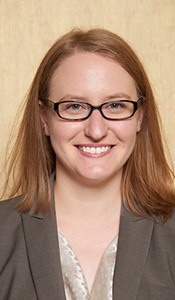Program Information
Dual-Energy CT Inter- and Intra-Scanner Variability Within One Make and Model
M Jacobsen*, C Wood , D Cody , UT MD Anderson Cancer Center, Houston, TX
Presentations
SU-G-206-7 (Sunday, July 31, 2016) 4:00 PM - 6:00 PM Room: 206
Purpose: It can be logistically quite difficult to scan patients on the same exact device for their repeat visits in multi-scanner facilities. The reliability between dual-energy CT scanners’ quantitative results is not known, nor is their individual repeatability. Therefore, we evaluated inter- and intra- scanner variability with respect to several key clinical quantitative metrics specific to dual-energy CT.
Methods: Eleven identical GE HD-750 CT scanners in a busy clinical environment were used to perform dual-energy (DE) CT scans of a large elliptical quality control (QC) phantom (Gammex, Inc.; Middleton, WI) which contains many standard insert materials. The DE-QC phantom was scanned bi-weekly during 2016; 3 to 4 scans were obtained from each scanner (a total of 35 data sets were used for analysis). Iodine accuracy for the 2mg/ml, 5mg/ml and 15mg/ml rods (from the Iodine(Water) image set) and soft tissue HU (40 HU based on NIST constants) from the 50keV data set were used to assess inter- and intra-scanner variability (standard deviation).
Results: Intra-scanner variability average for 2mg/ml Iodine was 0.10 mg/ml (range 0.05-0.15 mg/ml), for 5mg/ml Iodine was 0.12 mg/ml (range 0.07-0.16 mg/ml), for 15 mg/ml Iodine was 0.25 mg/ml (range 0.16-0.37 mg/ml), and for the soft tissue inserts was 2.1 HU (range 1.8-2.6 HU). Inter-scanner variability average for 2mg/ml Iodine was 0.16 mg/ml (range 0.11-0.19 mg/ml), for 5mg/ml Iodine was 0.18 mg/ml (range 0.11-0.22 mg/ml), for 15 mg/ml Iodine was 0.35 mg/ml (range 0.23-0.44 mg/ml), and for the soft tissue inserts was 3.8 HU (range 3.1-4.5 HU).
Conclusion: Intra-scanner variability for the iodine and soft tissue inserts averaged 3.1% and 5.2% respectively, and inter-scanner variability for these regions analyzed averaged 5.0% and 9.5%, respectively. Future work will include determination of smallest measurable change and acceptable limits for DE-CT scanner variability over longer time intervals.
Funding Support, Disclosures, and Conflict of Interest: This research has been supported by funds from Dr. William Murphy, Jr., the John S. Dunn, Sr. Distinguished Chair in Diagnostic Imaging at MD Anderson Cancer Center.
Contact Email:

